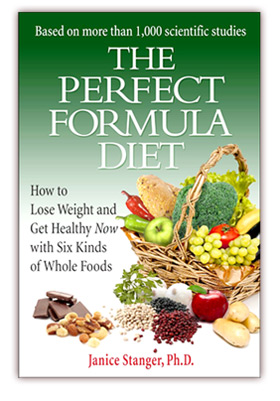The American Heart Association Analyzes Which Lifestyle Programs Work
Cardiovascular disease (CVD) causes over one third of deaths in the US, killing an American every 37 seconds. Want to live an extra seven years? That would be the average increase in life expectancy if CVD was totally vanquished.

The American Heart Association wants physicians to be able to recognize and recommend effective ways to lose weight and exercise more.
To combat CVD, the American Heart Association (AHA) put dozens of researchers to work reviewing hundreds of studies on lifestyle change programs. The goal of this project was to identify the interventions that help people exercise more, lose weight, and eat healthier. The AHA summarized their findings in a 37 page scientific statement published July 12, 2010.
The AHA reinforced the role of activity, weight, and eating in preventing CVD. Their statement points out that black and Hispanic immigrants are initially at lower risk for this condition than US-born citizens in the same ethnic groups. However, as the immigrants adopt an American diet and sedentary lifestyle, CVD becomes a harsh reality for them. Since cardiovascular disease is so closely related to lifestyle and obesity, better habits could help prevent illness and death for everyone.
The AHA statement distilled ten strategies that can effectively change the way people think, act, and feel. These changes, in turn, then lead to different choices about food and exercise. Briefly, here are the ten keys to programs that work.
- Goal setting. Specific goals maximize success. Goals are most effective when they are set early in the program and are specific, attainable in a reasonable amount of time, realistic, and focused on controllable behaviors. Goals should be easy enough to reach but not so slam-dunk that achieving them provides no sense of satisfaction. An example of this kind of goal would be to eat an extra serving of whole grains at every meal.
- Self-monitoring. If you are trying to change, you need to watch and measure how you are doing. Examples of this strategy include weighing yourself frequently or keeping a food or exercise log.
- Frequent and prolonged contact. Effective programs keep in touch with their participants frequently and over a period of several months or more. While face-to-face is nice, programs can also stay in touch through phone, email, or the Internet.
- Feedback and reinforcement. Information from the program helps you figure out how much you can benefit from changing health habits. As the program progresses, such feedback helps you stay on target to reach goals and determine how to do better.
- Building self-confidence. If you don’t think you can reach a goal, you might not even try. Effective programs boost a can-do attitude. Small successes build confidence in achieving long-term success. Even watching someone else achieve a goal, such as cooking a healthy meal, can lead you to realize that you can do it too.
- Incentives. Employers may provide rewards for employees to make specific health-related choices or achieve certain goals.
- Modeling. Lifestyle programs can use tools such as videos or exercise classes to teach you how to carry out better choices. These models enhance both skills and self-confidence.
- Problem solving. In making a change in diet or exercise, you are bound to run into problems and barriers. Effective programs teach skills to overcoming these issues and moving ahead.
- Relapse prevention. Perfection is a scarce commodity, and it’s normal to sometimes go back to previous, undesirable food and exercise habits. Relapse prevention teaches you to recognize when this is most a risk, and to move back to better choices after a lapse.
- Motivational interviewing. You may be ambivalent about making a change, even if you know it will make you healthier and add years to your life. Motivational interviewing is a style of counseling that works with your ambivalence to help you decide what you really want to do.
The best programs use several of the above strategies. Change is difficult, and each tool reinforces the effect of the others.

You may associate losing weight and getting healthy with deprivation. But it does not have to be that way. On a whole foods, plant-based diet you will permanently lose weight without hunger.
If you are selecting a program to help you lose weight, eat healthier, or exercise, you can use the ten strategies the AHA identified to pick out the best ones. If you are making the change on your own, with some help from family and friends, you can incorporate these strategies into your plans. For example, set specific goals and write them down. Periodically revise your goals to keep them challenging. Find others who have achieved success and find out how they did it. Learn problem-solving techniques to deal with barriers to success.
The AHA does sadly conclude, along with their hopeful take on effective programs, that long-term success with weight loss and exercise is elusive. Interventions that initially achieve impressive results often fail to change weight, behavior, and risk in the long-run. Even those that do help people change behavior may not measurably impact the progress of cardiovascular disease.
The neglected element in the AHA statement is the actual content of their recommended diet. The AHA eating plan contains generous amounts of animal food, focusing on “lean protein” that is lower in saturated fat. This diet is only a marginal change that will not reverse CVD or even much slow it down. This is because CVD is caused by an ongoing inflammatory process related to animal protein, not simply clogging arteries with fat.
The path to permanent, hunger-free weight loss and freedom from chronic illness is a whole foods, plant-based diet. Here’s the best strategy. Set a whole foods, plant-based diet as a long-term goal. Establish a series of short-term goals to get there. For example, week one may include eating an extra cup of vegetables every day. Week two may include an extra cup of fruit daily. Then double those amounts. Go meat-free one day a week, and then two. Start planning not-meals instead of meals. Use all the AHA strategies to stay on track until your goal is a daily pleasure and cardiovascular disease is a distant memory.
Intrigued? Now you can use our Whole Foods Blog Finder to target informative, fun postings on plant-based nutrition. Quick information at no cost!
Blog posting by Janice Stanger, Ph.D. Janice authored The Perfect Formula Diet, a nutrition book built on sustainable food choices. Enjoy six kinds of whole foods for permanent, hunger-free weight loss and health.
Tags: American Heart Association, cardiovascular disease, getting healthy, goal setting, Janice Stanger, lose weight, Plant-based nutrition, process of change, vegetables, weight loss, whole foods




